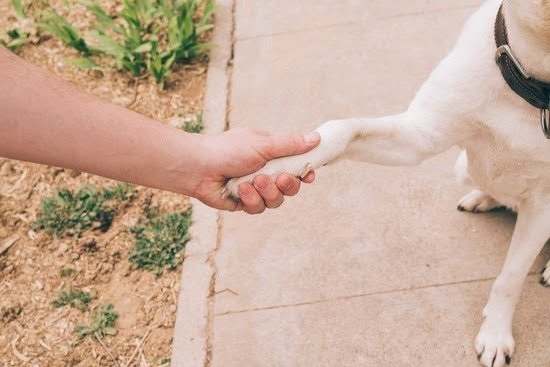Crate training is a popular method used by dog owners to create a safe and comfortable space for their furry friends. It involves teaching dogs to view their crate as a den-like environment where they can relax and sleep. However, despite being crate trained, some dogs may still cry at night, leaving their owners puzzled and concerned. In this article, we will delve into the reasons behind this behavior and provide insights on how to address it.
Crate training serves several purposes for dogs. Firstly, it provides them with a designated spot where they can retreat for privacy and security. Secondly, crates help prevent destructive behaviors when left unsupervised, as dogs are less likely to chew on furniture or belongings. Lastly, crates aid in housebreaking by restricting access to certain areas and teaching dogs to hold their bladder until given the opportunity to relieve themselves outside.
One of the main benefits of crate training is that it promotes a sense of routine and structure for dogs. They learn to associate the crate with positive experiences such as treats or toys, which helps them feel calm and secure inside their designated area. With these benefits in mind, it’s understandable why dog owners often choose crate training as a valuable tool in their pet’s upbringing.
Understanding the behavior of our beloved canine companions is essential for effective communication and care. In the following sections, we will delve deeper into the basics of crate training, explore common causes behind nighttime crying in crate trained dogs including separation anxiety and physical discomfort, discuss environmental factors affecting sleep quality, offer tips on adjusting the crate training routine, introduce behavior modification techniques through positive reinforcement methods, and conclude with final tips for successful crate training.
By gaining insight into why your crate trained dog cries at night and employing appropriate strategies, you can pave the way for a peaceful night’s sleep for both you and your furry friend.
The basics of crate training
Crate training is a valuable tool for dog owners to provide their furry friends with a safe and comfortable space of their own. Understanding the basics of crate training is essential in successfully implementing this training method.
Step-by-step guide to crate training your dog:
- Introduction to the crate: Introduce your dog to the crate gradually, allowing them to explore it at their own pace. Make the crate inviting by adding soft bedding and toys.
- Positive association: Use positive reinforcement techniques such as treats or praise to encourage your dog to enter the crate willingly. Avoid using the crate as punishment.
- Gradual confinement: Start by closing the door for short periods while you are present, gradually increasing the time spent in the crate. Ensure that your dog feels secure and comfortable during this process.
- Alone time: Once your dog is comfortable being confined in the crate with you nearby, gradually increase their alone time in the crate. Start with short intervals and slowly extend them over time.
Importance of positive reinforcement and rewards:
Positive reinforcement plays a crucial role in crate training by incentivizing desired behavior and making it more likely to recur. Rewarding your dog for entering or remaining calm in the crate helps them associate it with positive experiences. The use of treats, praise, or their favorite toy can be effective rewards during training sessions.
It’s important not to use punishment or negative reinforcement when crate training, as this can create fear and anxiety associated with the Crate Training Space (CTS). Instead, focus on creating positive associations and rewards for desired behaviors throughout each stage of training.
| Step | Description |
|---|---|
| 1 | Introduction to the crate |
| 2 | Positive association |
| 3 | Gradual confinement |
| 4 | Alone time |
Why does my crate trained dog cry at night?
Addressing common reasons behind nighttime crying
Crate trained dogs crying at night can be a puzzling behavior for pet owners. While crate training is generally effective in providing dogs with a sense of security and promoting good behavior, there are several reasons why a crate trained dog may cry during the night.
One common reason behind nighttime crying is separation anxiety. Dogs are pack animals by nature, and being confined in a crate at night can trigger feelings of isolation and distress. This anxiety may manifest as whining, pawing at the crate, or even destructive behaviors.
Another possible cause of nighttime crying is the need for bathroom breaks. Puppies or dogs who are not yet fully potty trained may cry to signal that they need to relieve themselves. It’s important to establish regular bathroom breaks throughout the night until your dog develops better control over their bladder.
Exploring separation anxiety as a possible cause
Separation anxiety is a significant issue for many crate trained dogs, especially when left alone at night. Dogs with separation anxiety may exhibit excessive vocalization, destructive behavior, or attempts to escape from the crate. This behavior can be distressing for both the dog and the owner.
To address separation anxiety in crate trained dogs, it’s crucial to gradually desensitize them to being crated and left alone. Start by making the experience positive and rewarding with treats and praise when they enter their crate voluntarily. Gradually increase the amount of time spent in the crate while remaining within their comfort zone.
Additionally, providing mental stimulation while your dog is crated can help alleviate separation anxiety. Interactive toys or treat-dispensing puzzles can keep them engaged and distracted from their distress. Professional help from an experienced trainer or veterinarian specializing in canine behavior may also be beneficial for addressing severe cases of separation anxiety.
Discussing the need for bathroom breaks during the night
Crying at night can also be a signal that your crate trained dog needs to relieve themselves. Puppies or dogs with small bladders may not be able to hold their urine throughout the night, leading to discomfort and restlessness. It’s important to establish a routine of taking your dog for a bathroom break right before bedtime and providing opportunities for them to relieve themselves during the night if needed.
If your crate trained dog consistently cries at night, it may be worth considering adjusting their feeding schedule. Feeding them earlier in the evening and reducing water intake closer to sleep time can help minimize the need for nighttime bathroom breaks. However, consult with your veterinarian before making any changes to ensure they are appropriate for your dog’s specific needs.
Separation anxiety in crate trained dogs
Separation anxiety is a common issue that can affect crate trained dogs. This condition occurs when dogs become distressed or anxious when they are separated from their owners or when left alone. It can manifest in various ways, including excessive crying, destructive behavior, and even self-harm. When crate training a dog with separation anxiety, it is important to address this underlying issue to help them feel more comfortable and secure in their crate.
One of the key reasons for separation anxiety in crate trained dogs is that they have not yet learned how to cope with being alone. Dogs are social animals and rely on the presence and companionship of their owners. Being confined to a crate can amplify feelings of isolation and trigger anxiety. It is crucial to gradually increase the time spent in the crate and provide positive reinforcement during periods of alone time to help alleviate these anxieties.
There are several tips and techniques to address separation anxiety in crate trained dogs. Firstly, it is important to establish a routine that helps your dog understand that you will return after leaving them alone in their crate. This can involve creating a predictable schedule for leaving and returning home so that your dog knows what to expect. Additionally, providing mental stimulation through interactive toys or treats within the crate can help distract your dog from their anxieties.
In order to combat separation anxiety effectively, it may be beneficial to seek professional assistance from a certified dog trainer or animal behaviorist experienced in treating separation anxiety. These professionals can utilize behavior modification techniques tailored specifically to your dog’s needs and provide guidance on how to create a safe and soothing environment within the crate.
With patience, consistency, and professional guidance, separation anxiety in crate trained dogs can be managed successfully, allowing for a happier and more comfortable overall experience for both the dog and owner.
| Common Causes of Separation Anxiety | Solutions |
|---|---|
| No gradual introduction to crate time alone | Gradually increase alone time in the crate to help dogs adapt |
| Lack of mental stimulation or distractions | Provide interactive toys or treats within the crate to keep dogs occupied |
| Unpredictable schedule for leaving and returning home | Create a consistent routine to help dogs understand when you will come back |
| Need for additional comfort and security | Create a calming environment with comfortable bedding and familiar scents in the crate |
Physical discomfort and health concerns
Potential health issues causing discomfort leading to crying
There are several potential health issues that may cause a crate trained dog to cry at night. These can include digestive problems, urinary tract infections, arthritis, or even dental pain.
Dogs are unable to communicate their discomfort directly and may resort to crying as a way of expressing their distress. It is crucial for owners to monitor their dog’s behavior closely and look out for any signs of physical discomfort such as difficulty lying down or getting up, excessive itching or licking, decreased appetite, or changes in bathroom habits.
Advice on checking for and addressing physical discomfort in dogs
If you suspect that your crate trained dog is crying at night due to physical discomfort, it is important to consult with a veterinarian. A thorough examination can help identify any underlying health issues that may be causing the distress. The vet may recommend appropriate treatment options such as medication or dietary changes based on the diagnosis. Additionally, ensuring your dog has comfortable bedding and access to fresh water throughout the night can also help alleviate any physical discomfort.
The significance of regular vet check-ups for a crate trained dog
Regular veterinary check-ups play a crucial role in maintaining the overall health and well-being of your crate trained dog. Even if there are no apparent physical symptoms or concerns, scheduling routine examinations allows the vet to detect any potential underlying issues early on before they escalate into more serious problems.
This proactive approach can minimize the chances of your dog experiencing physical discomfort or developing chronic conditions that could contribute to nighttime crying. By prioritizing regular vet visits, you are ensuring that your dog’s physical health is addressed and potentially eliminating one possible cause of their crying at night.
Environmental factors affecting sleep
One important aspect to consider when trying to understand why your crate trained dog may be crying at night is the impact of environmental factors on their sleep. Dogs, just like humans, can be sensitive to their surroundings and external stimuli that may disrupt their ability to settle down and rest. Here are some key points to consider regarding environmental factors affecting sleep in crate trained dogs:
- Impact of external noises: Dogs have heightened senses and can be easily disturbed by loud or sudden noises. If your dog’s crate is located in an area where noises from outside or within the household are prominent, it could be causing them distress and leading to nighttime crying. This can include sounds from traffic, construction, loud appliances, or even other pets in the house.
- Solutions for minimizing noise disruptions: To create a more peaceful sleeping environment for your crate trained dog, consider implementing measures to minimize noise disruptions. This can include placing the crate in a quieter area of the house or using soundproofing techniques such as curtains or foam insulation pads to help block out unwanted noise.
Additionally, introducing white noise machines or calming music specifically designed for dogs can also help drown out external noises and promote better sleep. - Importance of creating a calming environment: Beyond addressing external disturbances, it is important to create a comforting and soothing atmosphere around your crate trained dog’s sleeping area. Providing soft bedding material that retains warmth and has a familiar scent can help mimic a secure den-like environment that dogs naturally seek out.
Dimming the lights or using low-level lighting in the room where the crate is located can also promote relaxation and cue your dog that it’s time to wind down for sleep.
By identifying and addressing potential environmental factors that may be affecting your dog’s sleep, you can take steps towards creating a more peaceful sleeping experience for both you and your furry companion during crate training. Remember that every dog is unique, so it might require some trial and error to find what works best for your dog’s specific needs.
Ultimately, creating a calm and quiet environment can go a long way in helping your crate trained dog settle down and sleep soundly through the night.
Adjusting the crate training routine
When your crate trained dog cries at night, it can be frustrating and concerning. However, there are several reasons why this might be happening, and one possible cause could be an issue with the crate training routine. Making adjustments to the routine can help address the problem and promote a better night’s sleep for both you and your furry friend.
- Evaluate the duration of time spent in the crate at night: One reason why your dog may cry at night is that they are spending too much time in the crate. It’s important to evaluate how long they are crated during nighttime hours. If you are leaving them in there for extended periods, this could cause anxiety or discomfort. Consider shortening their crate time and gradually increasing it as they adjust.
- Gradually increase crate time to allow for adaptation: Dogs need time to adapt to their crates, especially if they are new to crate training or have experienced a negative association with confinement in the past. By gradually increasing their crate time, you give them a chance to get used to being alone in the crate without becoming overwhelmed or anxious.
- Make the crate a more comfortable and inviting space: Another reason why your dog may cry at night is that they are uncomfortable in their crate. Ensure that the bedding is soft and cozy, and consider adding some familiar scents or toys that provide comfort. Make sure the temperature is appropriate, as extreme heat or cold can also cause discomfort.
By adjusting your crate training routine, you can help alleviate your dog’s nighttime crying and create a more positive sleeping environment for them. Remember to be patient and consistent throughout this process, as it may take time for your dog to fully adjust to their new routine. Consulting with a professional trainer or behaviorist can also provide valuable guidance if you’re struggling to find a solution on your own.
Behavior modification techniques
One effective technique is to reward your dog for calm behavior inside the crate. When your dog enters the crate without fussing or crying, provide them with treats, praise, or a favorite toy. This will help them understand that being calm and quiet in the crate leads to positive outcomes.
Gradually increase the duration of time your dog spends in the crate while rewarding them for remaining calm. This can help your dog build up their tolerance and comfort level with being inside the crate.
It’s important to create a positive and inviting environment within the crate as well. Make sure the crate is comfortable by providing soft bedding and maybe even an item that has your scent on it, such as an old t-shirt. Additionally, consider using a calming pheromone spray or diffuser in the area around the crate to create a soothing atmosphere for your dog. These small adjustments can make a big difference in helping to reduce nighttime crying.
In some cases, professional training may be necessary if behavior modification techniques alone are not successful in reducing nighttime crying. A professional trainer or canine behaviorist can assess your individual situation and provide tailored guidance and support for both you and your dog. They may recommend additional exercises or strategies based on your dog’s specific needs.
By utilizing behavior modification techniques, you can help alleviate nighttime crying in your crate trained dog and promote a more peaceful sleeping environment for both you and your pet. Remember to be patient and consistent throughout this process as it may take time for your dog to adjust. With persistence, love, and guidance, you can help your dog develop into a content and well-adjusted member of your family.
Final tips for crate training success
Crate training can be a beneficial and effective tool for both dogs and their owners, but it does take time and patience to see success. Here are some final tips to ensure a smooth crate training experience:
- Consistency and Patience: Consistency is key when it comes to crate training. Stick to a consistent routine of putting your dog in the crate at the same times each day and night. This will help establish a sense of routine and predictability for your dog. Additionally, be patient with your dog’s progress. Some dogs may take longer to adjust to crate training than others, so give them the time they need to feel comfortable.
- Interactive Toys or Treats: Make the crate an inviting space for your dog by providing interactive toys or treats. This can help keep them occupied and entertained while in the crate, making it a more positive experience for them. Look for toys that can be stuffed with treats or puzzle toys that require mental stimulation.
- Seek Professional Help if Needed: If you have tried various methods and your dog continues to cry at night in their crate, don’t hesitate to seek professional help from a certified trainer or behaviorist who specializes in dogs with separation anxiety or behavioral issues related to crate training. They can provide guidance tailored specifically to your dog’s needs.
By following these final tips, you can increase the chances of successfully crate training your dog and minimizing nighttime crying episodes. Remember, every dog is unique and may require different approaches, so stay patient, adaptable, and committed throughout the process.
Crate training not only benefits dogs by providing them with a safe space of their own but also offers peace of mind for owners knowing their furry companion is secure while they cannot supervise them directly. With consistency, patience, and proper techniques, you can create a positive environment where your dog feels comfortable in their crate both during the day and at night.
Ultimately, a well-adjusted and content crate trained dog is the goal. By addressing the reasons behind nighttime crying, offering solutions for separation anxiety and physical discomfort, creating a calming environment, adjusting the crate training routine as needed, and using behavior modification techniques, you can achieve success in crate training your dog.
Remember to always reinforce positive experiences with the crate and seek professional help if necessary. With time and effort, you and your canine companion can enjoy the benefits of crate training for years to come.
Conclusion
In conclusion, understanding the behavior of a crate trained dog and addressing their nighttime crying is crucial for both the well-being of your pet and your own peace of mind. By following the basics of crate training and utilizing positive reinforcement techniques, you can create a comfortable and inviting space for your dog.
Separation anxiety and physical discomfort are common reasons behind nighttime crying, but they can be effectively managed through gradual increases in crate time and regular vet check-ups.
Environmental factors, such as external noises, can also disrupt your dog’s sleep. Minimizing noise disruptions and creating a calming environment can greatly contribute to a peaceful night’s sleep for your canine companion. Additionally, adjusting the crate training routine by evaluating the duration of time spent in the crate at night and making it more comfortable can help alleviate any distress.
Behavior modification techniques, such as positive reinforcement methods, are essential in discouraging nighttime crying. Teaching your dog to associate the crate with positive experiences will further reinforce their contentment with being crated at night. However, if you find that your dog is struggling with nighttime crying despite implementing these techniques, it may be beneficial to seek professional help from a dog trainer or veterinarian.
By remaining consistent and patient throughout the crate training process, you will eventually have a well-adjusted and content crate trained dog. The benefits of crate training extend beyond just preventing destructive behavior or accidents; it provides security for your pet and allows them to have their own safe space. With these tips in mind, you are on your way to enjoying peaceful nights with your furry friend by your side.
Frequently Asked Questions
Is it OK to let a dog cry in his crate at night?
Whether it is okay to let a dog cry in his crate at night depends on the situation and the underlying reason for the crying. In general, a dog may cry in his crate at night if he is not accustomed to being confined or if he is experiencing separation anxiety. It’s essential to assess whether the dog’s physical and emotional needs are being met.
If the dog has been properly exercised, mentally stimulated, and taken out for bathroom breaks before being placed in the crate, allowing some initial crying can be acceptable as the dog adjusts to this new routine. However, prolonged or excessive crying may indicate distress or an underlying issue that needs attention, so it’s crucial to monitor the situation closely and address any concerns.
Why does my dog suddenly not want to sleep in his crate?
There could be several reasons why a dog suddenly does not want to sleep in his crate. One possibility is that something about the crate has become associated with a negative experience for the dog. For example, if the dog experienced anxiety or discomfort while inside the crate before, he might now associate it with those feelings and avoid going inside.
Another reason could be changes in their environment or routine that have made them feel unsettled or anxious about being confined. Additionally, discomfort due to physical factors such as pain or illness might also be causing aversion towards the crate. To determine why your dog suddenly dislikes his crate, consider any recent changes or potential negative associations and consult with a veterinarian or a professional trainer for guidance on how to address this change in behavior.
How do I get my dog to stop crying in his crate overnight?
To help stop your dog from crying in his crate overnight, it’s important to take a gradual and systematic approach. Begin by creating positive associations with the crate during daytime hours when you are present. Make sure your dog associates pleasant experiences like treats, favorite toys, and praise when going into and staying calm inside the crate voluntarily. Gradually increase the amount of time your dog spends inside during these positive sessions until he becomes comfortable being crated for extended periods. During the night, establish a consistent bedtime routine that includes providing physical and mental exercise before crate time, ensuring your dog has relieved himself, and giving him a chance to settle down before placing him in the crate.
It may be helpful to cover the crate with a blanket or use white noise to create a cozy sleeping environment. If your dog cries during the night despite these measures, try not to give in immediately. Instead, provide reassurance by speaking softly or offering comfort from outside the crate without letting him out. Over time, your dog should start feeling more secure and develop a positive association with his crate during sleep hours.

Welcome to the blog! I am a professional dog trainer and have been working with dogs for many years. In this blog, I will be discussing various topics related to dog training, including tips, tricks, and advice. I hope you find this information helpful and informative. Thanks for reading!





